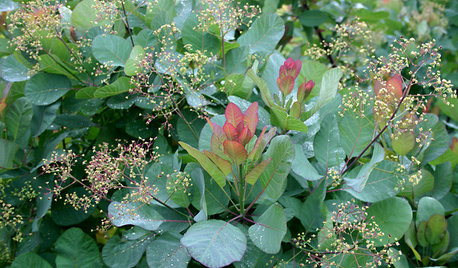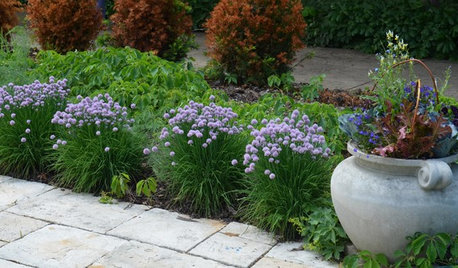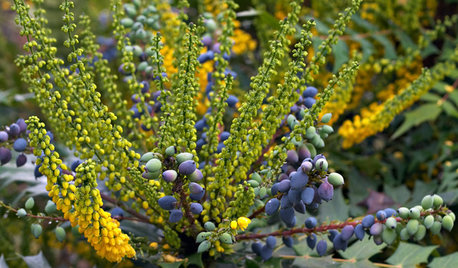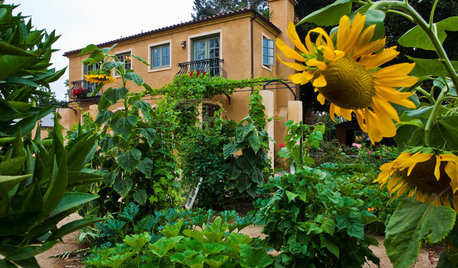Too much compost? Curly leaves, purple veins
amysrq
14 years ago
Related Stories

LANDSCAPE DESIGNGreat Design Plant: Old Fashioned Smoke Bush
Balance garden color with this shrub's cool blue-green foliage, luminous when backlit and sporting yellow-green flowers in spring
Full Story
FALL GARDENING7 Reasons Not to Clean Up Your Fall Garden
Before you pluck and rake, consider wildlife, the health of your plants and your own right to relax
Full Story
GARDENING AND LANDSCAPINGWorld of Design: 10 Home Gardeners Show Us Their Sweet Summer Harvests
From New York to Tokyo, these gardeners have turned their yards, terraces and rooftops into places of bounty
Full Story
FARM YOUR YARDHouzz Call: Home Farmers, Show Us Your Edible Gardens
We want to see where your tomatoes, summer squashes and beautiful berries are growing this summer
Full Story
GARDENING GUIDESEdible Plants That Double as Ornamentals
Try growing these tasty plants with your ornamentals for an attractive garden and fresher meals
Full Story
TREES11 Japanese Maples for Breathtaking Color and Form
With such a wide range to choose from, there’s a beautiful Japanese maple to suit almost any setting
Full Story
GARDENING FOR BUTTERFLIESGreat Design Plant: 'Charity' Oregon Grape
Giving nectar to hummingbirds and delicious berries to all, 'Charity' is a four-season garden delight that lives up to its name
Full Story
GARDENING GUIDES13 Japanese Maples for Shade
A surprising variety of these understory trees is waiting to make a statement in your shade garden
Full Story
GARDENING GUIDESGrow a Beautiful Garden in Alkaline Soil
Got alkaline soil? Learn how to manage it and the many beautiful plants that will thrive in this ‘sweet’ soil
Full Story
REGIONAL GARDEN GUIDESTexas Gardener's April Checklist
Get your sowing and planting on — spring brings a tantalizing array of possibilities in the garden
Full Story




mulio
avid_hiker
Related Discussions
Petunia leaves chartreuse, purple veins
Q
Young Thai Dragon Plant - Veins/Leaves Turning Black
Q
Hydrangia with pale leaves, green veins
Q
Strange problems with tomatoes (purple+curly+yellow spots)
Q
jean001
jean001
yardenman
missingtheobvious
amysrqOriginal Author
struwwelpeter
missingtheobvious
ryinpairodice
amysrqOriginal Author
ryinpairodice
jean001
missingtheobvious
avid_hiker
jean001
jean001
avid_hiker
avid_hiker
amysrqOriginal Author
homegardenpa
mary_id
missingtheobvious
jean001
amysrqOriginal Author
amysrqOriginal Author
planatus
homegardenpa
jean001
amysrqOriginal Author
korney19
homegardenpa
struwwelpeter
planatus
amysrqOriginal Author
jean001
amysrqOriginal Author
planatus
struwwelpeter
amysrqOriginal Author
stoloniferous
Camelotshadow
dirtgirl07
Camelotshadow
sgc_dca_net
amysrqOriginal Author
gardencat10
sgc_dca_net